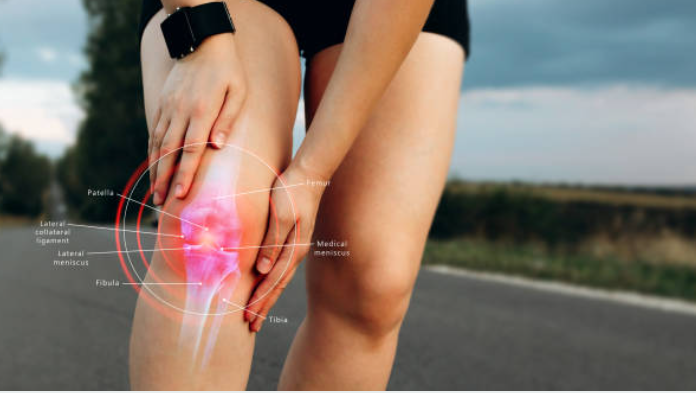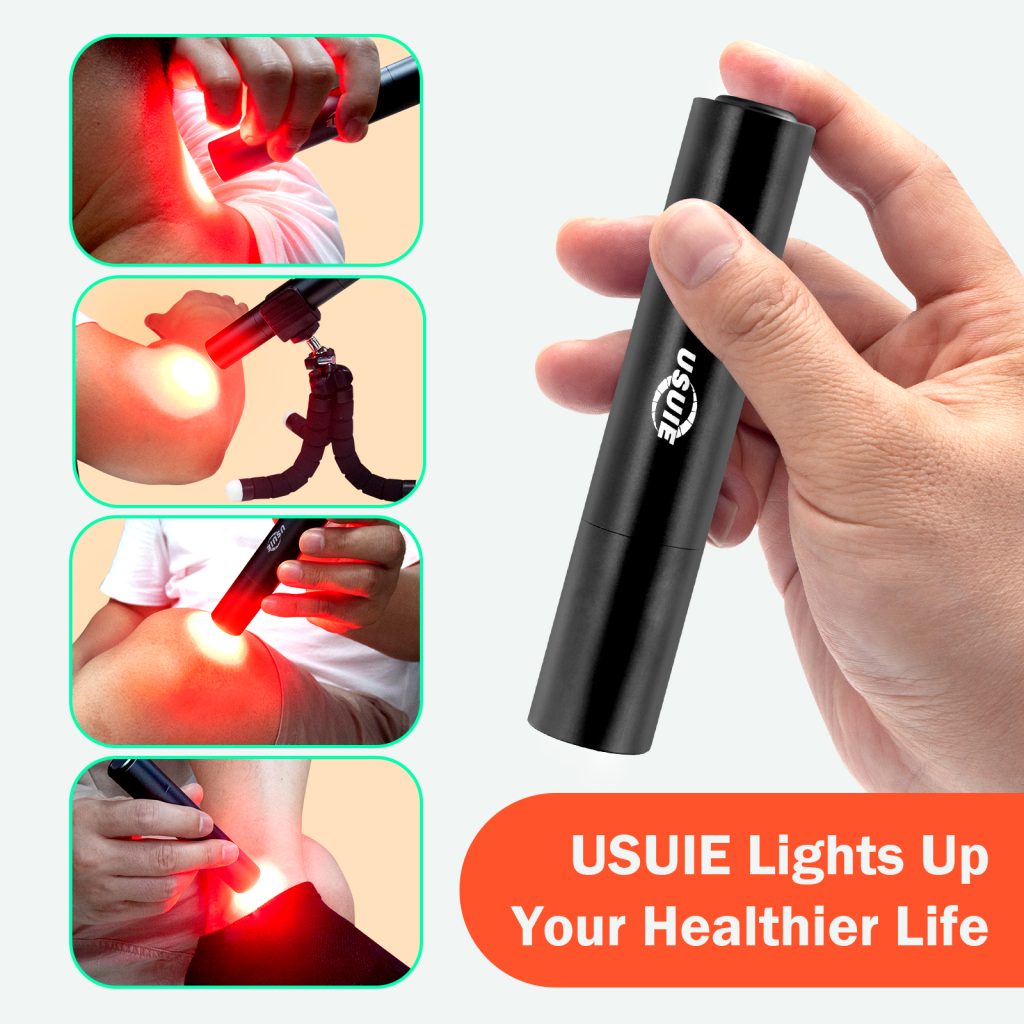Are you tired of dealing with painful and uncomfortable swelling? If so, you may be interested in exploring the benefits of red light therapy.
Red light therapy is a non-invasive treatment that has gained popularity for its potential to reduce swelling and inflammation in various conditions. Swelling occurs when excess fluid builds up in the body’s tissues, often causing discomfort and restricting movement. Various factors, such as injury, surgery, or certain medical conditions, can cause it.
Red light therapy, or low-level laser therapy, uses specific wavelengths of light to penetrate deep into the skin and stimulate cellular healing and regeneration.
In this article, we will explore the potential of red light therapy in reducing swelling. We will discuss the conditions where this therapy is commonly used and present findings from scientific studies that support its effectiveness.
So, if you’re curious whether red light therapy can help with your swelling, keep reading to discover the possibilities.
Explanation of Swelling and its Causes
Did you know that various factors, including injury, infection, and inflammation, can cause swelling? When your body experiences any of these conditions, it responds by increasing blood flow to the affected area, leading to fluid accumulation and swelling.
Injury, such as a sprained ankle, can cause the blood vessels to leak fluid into the surrounding tissues. Infections, like cellulitis, trigger the body’s immune response, resulting in inflammation and swelling. Inflammatory conditions, such as arthritis or tendinitis, can cause the body to release chemicals that promote swelling.
Red light therapy has been shown to help with swelling by increasing blood circulation, reducing inflammation, and promoting tissue repair. By using red light therapy, you can alleviate swelling and promote faster healing.

Conditions where Red Light Therapy is Used
Red light therapy might benefit you if you’re dealing with chronic inflammatory conditions, post-workout recovery, or wound healing. This therapy has been known to help reduce inflammation and pain associated with chronic conditions. It can also speed up muscle recovery after intense workouts and promote faster healing of wounds.
So, if you’re looking for a non-invasive and drug-free approach to address these issues, red light therapy could be worth considering.
1. Chronic Inflammatory Conditions
Red light therapy can effectively reduce swelling in chronic inflammatory conditions. When you have arthritis, tendonitis, or bursitis, inflammation can cause pain and discomfort. Red light therapy stimulates the mitochondria in your cells, promoting healing and reducing inflammation.
The red light wavelengths penetrate deep into your tissues, targeting the affected areas and helping to decrease swelling. This therapy also increases blood flow, which aids in the removal of toxins and waste products that contribute to inflammation.
By regularly using red light therapy, you can experience a significant reduction in swelling, leading to improved mobility and decreased pain. Incorporating this non-invasive and drug-free treatment into your routine can be a beneficial addition to managing chronic inflammatory conditions.
2. Post-Workout Recovery
Boost your post-workout recovery and enhance muscle repair using red light therapy.
After an intense workout, your muscles may feel sore and inflamed. Red light therapy can help alleviate swelling and promote faster healing.
Exposing your muscles to red light penetrates deep into the tissues, stimulating cellular energy production and increasing blood flow. Increased blood flow helps remove waste products and delivers nutrients and oxygen to the muscles, aiding their recovery.
Red light therapy also reduces inflammation by inhibiting the production of pro-inflammatory substances. Incorporating red light therapy into your post-workout routine can speed up your recovery time, reduce muscle soreness, and get back to your active lifestyle faster.

3. Wound Healing
Accelerate the healing process of your wounds and experience a sense of relief and rejuvenation as you incorporate this innovative therapy into your routine.
Red light therapy effectively promotes wound healing by increasing blood circulation and stimulating collagen production, which is essential for tissue repair. Exposing your wounds to red light can reduce inflammation and swelling, allowing your body to heal faster and more efficiently.
This therapy also helps minimize scar formation, ensuring your wounds heal with minimal scarring. With regular use, red light therapy can significantly improve the healing time of your wounds, allowing you to get back to your daily activities sooner.
Incorporate this non-invasive and natural treatment into your post-wound care routine and experience its many benefits.

Presentation of Findings
In this discussion, we’ll focus on three key points related to red light therapy. You’ll learn how red light therapy can help decrease inflammation in the body, improve blood flow, and speed up the healing process of damaged tissues. By understanding these findings, you can better understand the potential benefits of red light therapy for various conditions.
1. Reduction of Inflammation
Try using red light therapy to alleviate swelling and inflammation. Red light therapy has been shown to reduce inflammation by increasing blood flow and promoting the release of nitric oxide in the body. When applied to the affected area, red light penetrates the skin and stimulates the production of collagen and elastin, which can help repair damaged tissues and reduce swelling.
Additionally, red light therapy has decreased the production of pro-inflammatory cytokines, which contribute to inflammation. By targeting the underlying causes of swelling and inflammation, red light therapy offers a non-invasive and natural approach to relieving discomfort and promoting healing.
Incorporating red light therapy into your treatment plan may provide effective relief and speed up recovery.
2. Increased Circulation
To enhance blood flow and promote healing, incorporating red light therapy into your treatment plan can be a game-changer. Red light therapy works by increasing circulation in the body, which can have numerous benefits for reducing swelling.
When the red light penetrates the skin, it stimulates the production of nitric oxide, a molecule that helps dilate blood vessels and improve blood flow. This increased circulation allows for better oxygen and nutrient delivery to the affected area, which can help reduce swelling and inflammation.
Additionally, red light therapy has been shown to stimulate collagen production, a protein that plays a crucial role in tissue repair. By improving circulation and promoting collagen production, red light therapy can effectively reduce swelling and promote healing.
3. Accelerated Tissue Repair
Now that you understand how red light therapy can improve circulation let’s dive into its ability to accelerate tissue repair.
It is where red light therapy shines when it comes to swelling. Delivering specific wavelengths of red and near-infrared light to the affected area stimulates the production of ATP, the energy source for cells. This boost in energy enhances cellular activity, promoting faster healing and reducing swelling.
The light also increases collagen production, which helps to strengthen and rebuild damaged tissues. So, whether you’re dealing with post-workout inflammation or recovering from an injury, red light therapy can be a game-changer.
Incorporating this non-invasive and drug-free treatment into your routine can significantly speed up your recovery and quickly get you back on your feet.

Conclusion
To sum it up, red light therapy can help reduce swelling. It works by increasing blood circulation and promoting healing in the affected area.
Many people have experienced positive results when using this therapy for various conditions that cause swelling. Whether dealing with inflammation from an injury or a chronic condition, red light therapy may be a natural and non-invasive treatment option.
Give it a try and see if it helps alleviate your swelling.
